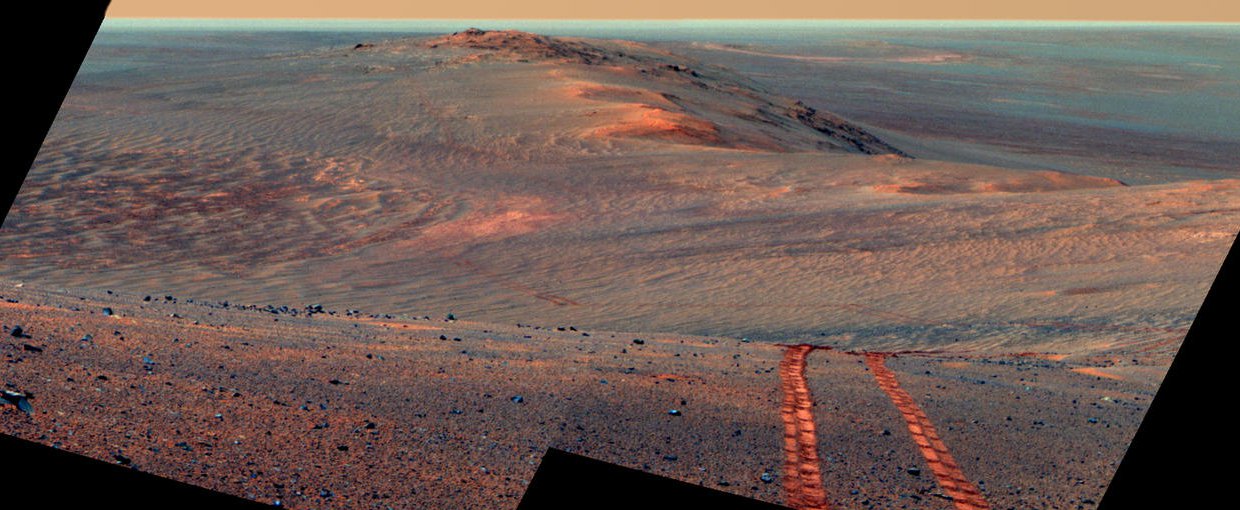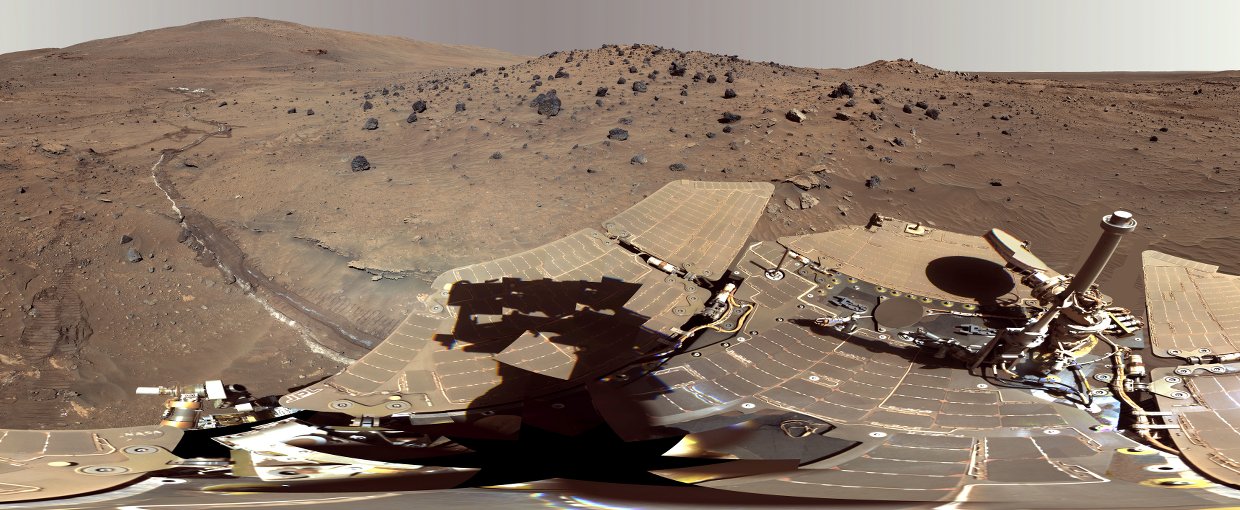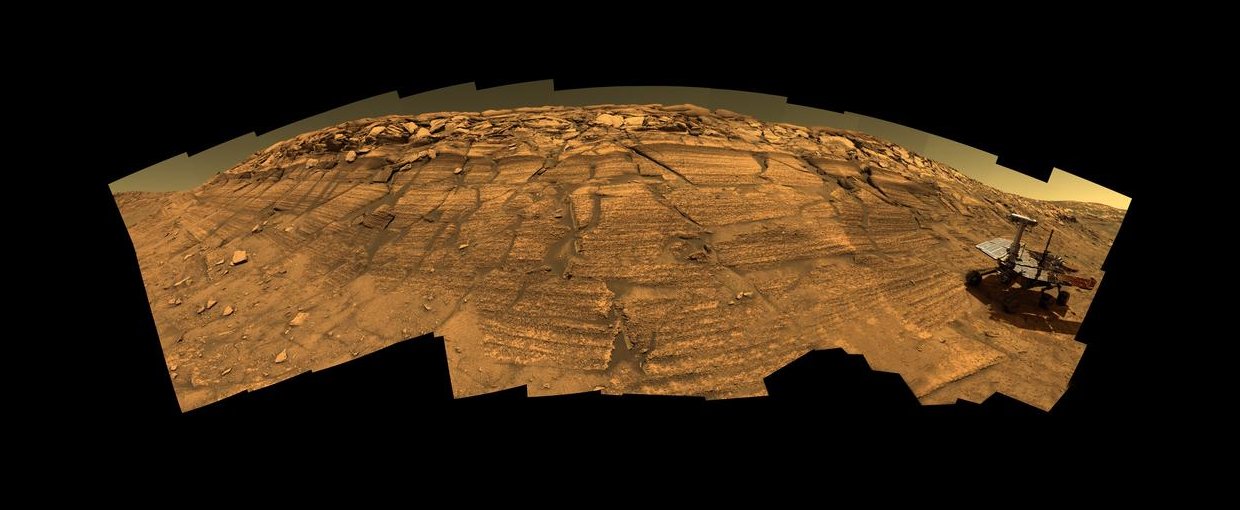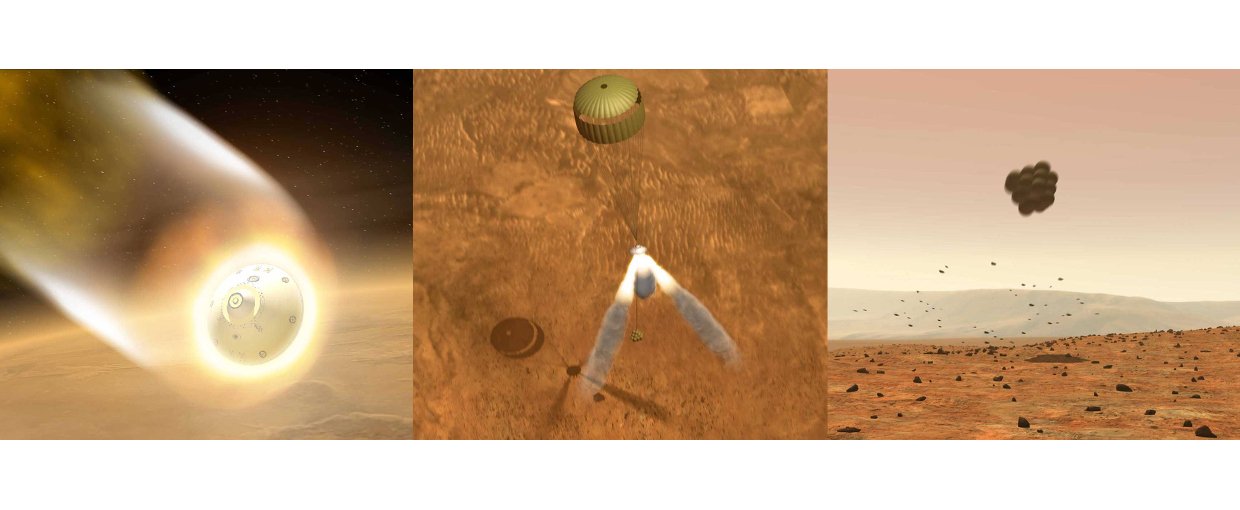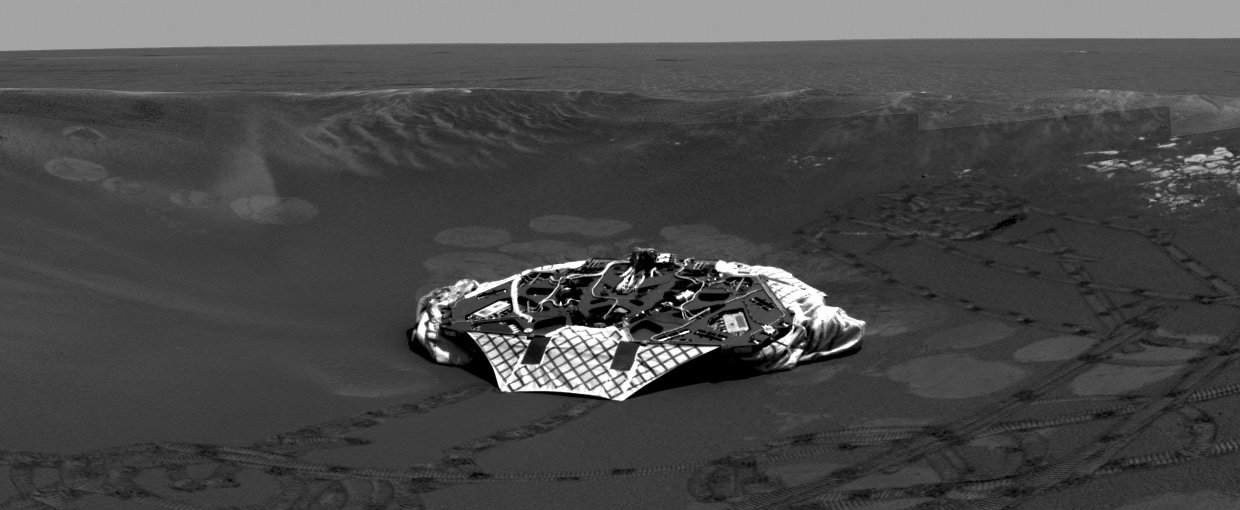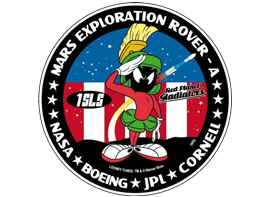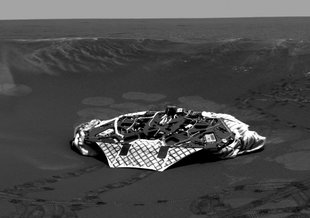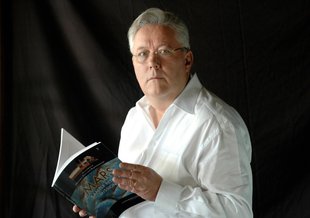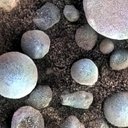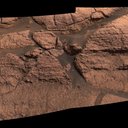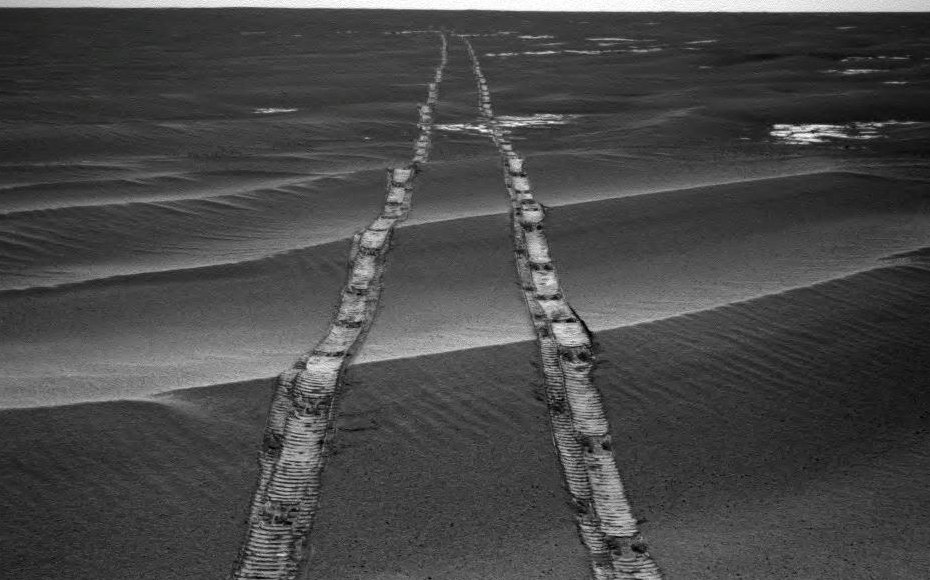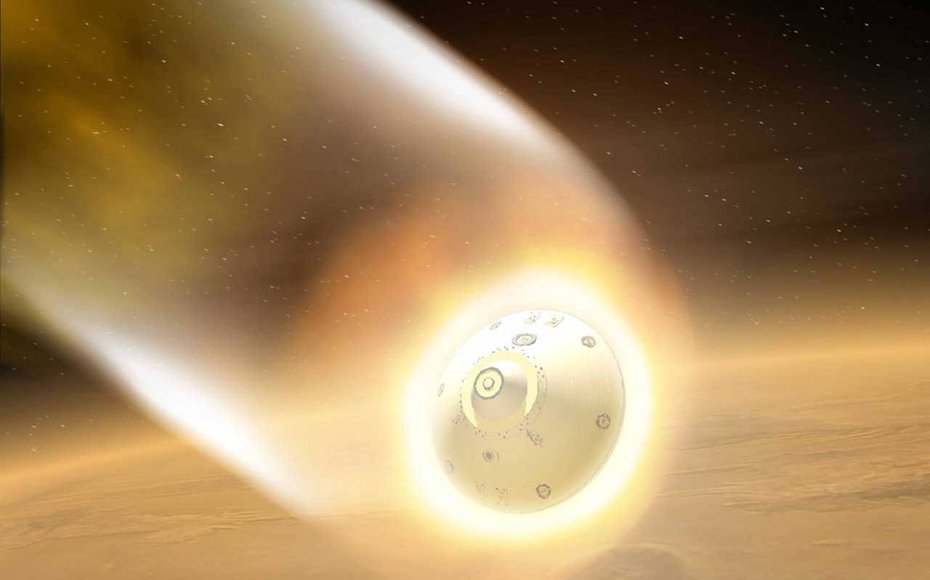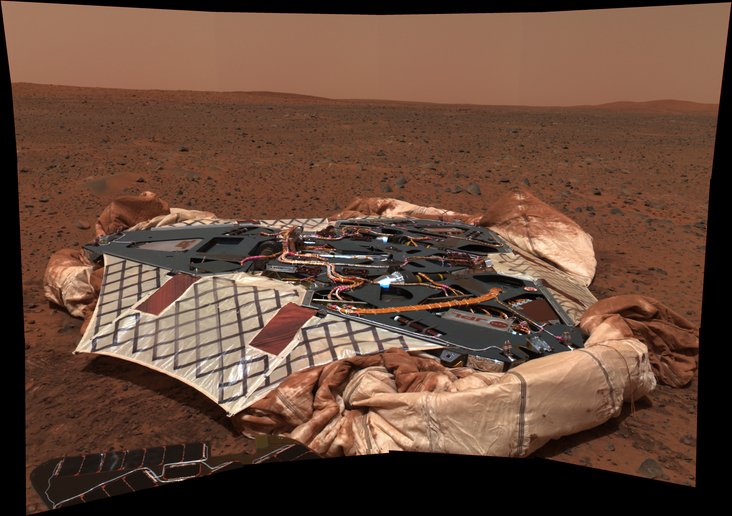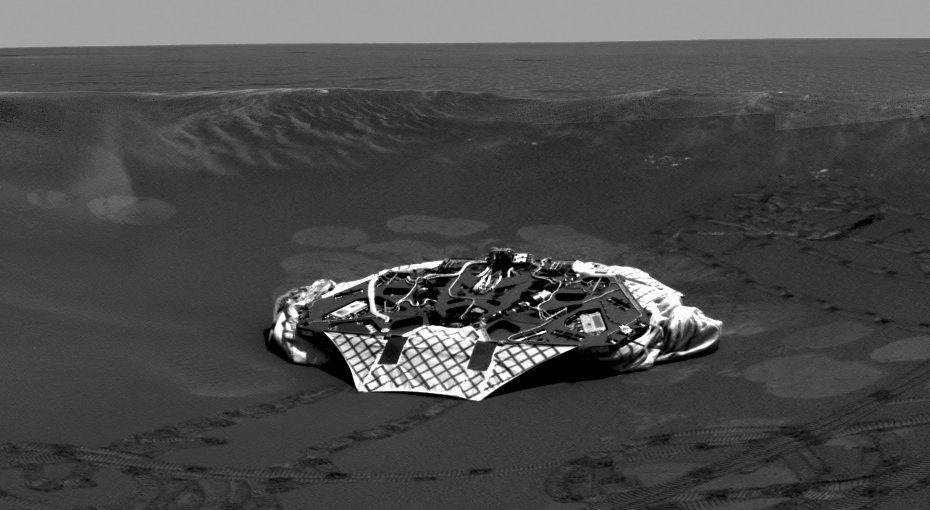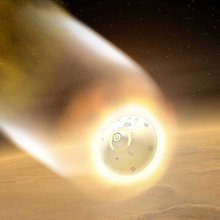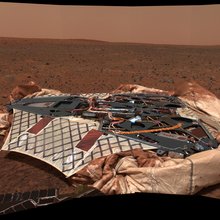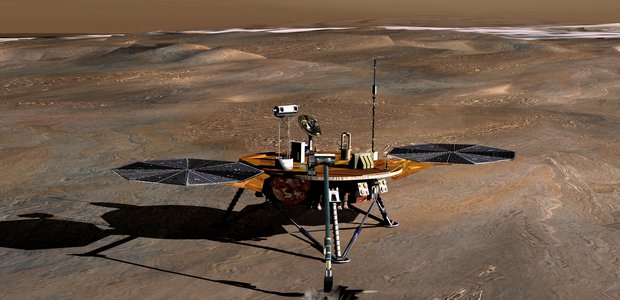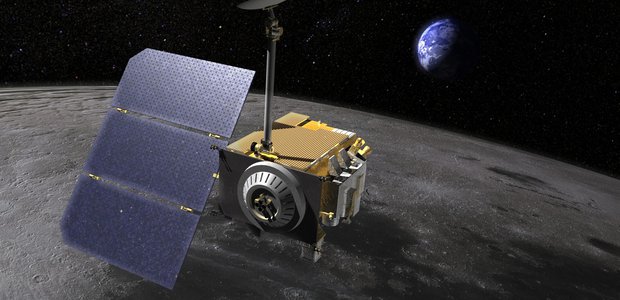- Launch Date June 09, 2003
- Arrival Date January 24, 2004
- End DateFebruary 13, 2019
- Mission TypeLander/Rover
- TargetMars
Mission Overview
NASA’s twin Mars Exploration Rovers, Spirit and Opportunity, launched in the summer of 2003. Spirit landed on the broad plain of Gusev Crater on January 4, 2004. Opportunity struck a ‘hole-in-one’ landing, bouncing across Meridiani Planum directly into tiny Eagle Crater on January 25, 2004.
The MER rovers were designed to last for 90 martian days, however both robotic explorers far outlasted their original missions and spent years collecting data at the surface of Mars. Spirit’s wheels carried across the plains of Gusev Crater for over six years, with its last confirmed signal on March 22, 2010. Opportunity roved Meridiani Planum for an incredible fifteen years, sending its last signal on June 10, 2018.
Opportunity was enveloped in a planet-wide dust storm on Mars in June of 2018. Because the rover relied on solar panels for energy, it was unable to charge its batteries under the dust-laden skies. Engineers attempted to restore contact with the rover for many months, but the mission was declared complete in February of 2019.
Relevance to Astrobiology
A primary objective of the MER mission was to search for and characterize a wide range of rocks and soils that hold clues to past water activity on Mars. Studying the history of water on Mars is essential in determining whether or not the planet once supported environments that could have been habitable for life as we know it.
NASA Astrobiology Involvement
The NASA Astrobiology Program played an important role in the development of the MER mission, and supported the development of instruments carried onboard the rovers. The Astrobiology Program also funds astrobiologists who work with the immense amount of data returned by the MER mission. This data has been used to identify environments that may have supported conditions suitable for life in Mars’ past and will guide the future of Mars exploration for decades to come.
The Astrobiologists
NAINASA Ames Research Center Team PI David Des Marais served on the MER Science Operations Working Group as a Lead of the Long Term Planning Theme Group. In addition, Richard Morris was a member of the MER Moessbauer instrument team. The methodology developed through this project has helped to create interpretive context for mineralogy data produced by the instrument suite on MER.
NAI Massachusetts Institute of Technology Team member John Grotzinger was a Participating Scientist; Andrew Knoll was a Co-I on MER.
NAI Arizona State University Team member Phil Christensen was a Co-I on MER, responsible for the Mini-TES instruments. Co-I Jack Farmer was a Participating Scientist, Geology Theme Group member and a Long-term Planning Lead for MER since the mission began in 2004, and was been continuously involved with surface operations since that time.
Research by Farmer, Christensen, Mikhail Zolotov and others into geochemical scenarios accounting for observed Mars mineralogy aids in interpreting data from this and other Mars missions. Research into the stoichiometry of life led by Co-Is Jim Elser and Everett Shock helps to assess the habitability of the environments that MER explored.



